Hey who is like me and loves the colour copper goes after about fifty years. how can I speed this process op?
Discussion Forum
Discussion Forum
Up Next
Video Shorts
Featured Story

Listeners write in about shower panels and cordless tools and ask questions about old wiring, air leaks, and gutter covers.
Featured Video
Video: Build a Fireplace, Brick by BrickHighlights
"I have learned so much thanks to the searchable articles on the FHB website. I can confidently say that I expect to be a life-long subscriber." - M.K.
Fine Homebuilding Magazine
- Home Group
- Antique Trader
- Arts & Crafts Homes
- Bank Note Reporter
- Cabin Life
- Cuisine at Home
- Fine Gardening
- Fine Woodworking
- Green Building Advisor
- Garden Gate
- Horticulture
- Keep Craft Alive
- Log Home Living
- Military Trader/Vehicles
- Numismatic News
- Numismaster
- Old Cars Weekly
- Old House Journal
- Period Homes
- Popular Woodworking
- Script
- ShopNotes
- Sports Collectors Digest
- Threads
- Timber Home Living
- Traditional Building
- Woodsmith
- World Coin News
- Writer's Digest
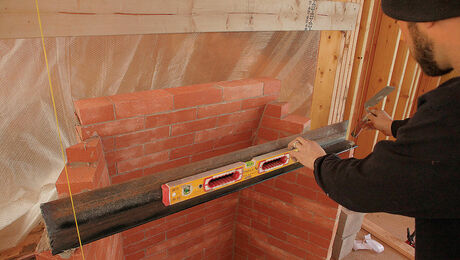
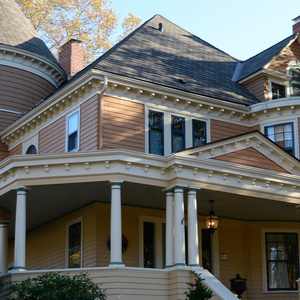
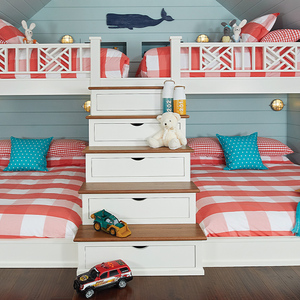
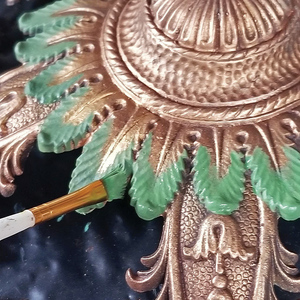
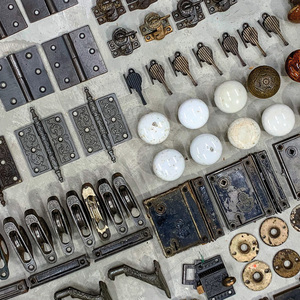







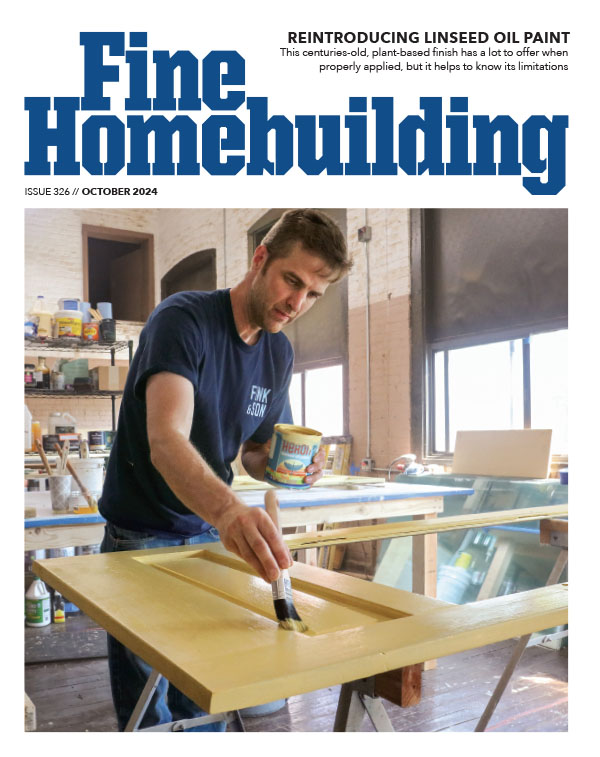





Replies
You can age copper with chemicals. Search the web for "Copper Patina" and you will get some results. Check your local hobby/craft shop, they may have some suggestions.
"Now here at the Rock we have two rules. Memorize them until you can say them in your sleep. Rule number one: obey all rules. Rule number two: no writing on the walls." Barney Fife
Marv
Spray paint works too.
or pee............
Thats what they used on the Statue of Liberty!Mr T
Do not try this at home!
I am an Experienced Professional!
I know that everyone equates weathered copper with a green patina, but in reality, it's not always green, it's actually brown. We have an antique whale weather vane on our roof and we live about 150 yards from the ocean's edge (Southern California). There are hardly ANY traces of green on the whale- it's mostly brown. The only place I see green is on brass fittings and fasteners on my boats. Even there, it's minimal.
If you have an exterior detail, just let it weather naturally. If it's an indoor feature, then you might try one of the store-bought chemicals someelse mentioned. And I also heard that urine will do the trick.
Good luck!
Ammonia and some salt. Contain the item in a sealed room and let the ammonia evaporate from a pan into the sealed room. (make the room or space just big enough to hold the item. Mix some sawdust and salt and get it dampen it with a water ammonia solution to make a mottled effect.
Thats the basic way.
Pick up a book on patinas, they can give detailed recipes on coloring metal. The book i picked up is filled with endless possiblilities with a great photo collection of patina results
Drink a six pack and pee on it. It works-honest. ;^}
12 pack..............
Have the crew take turns "finishing". :^}
and none of that lite s h i t .......................................
stuff called JAX.....but urine does work the quickest, it's legit...
A couple of links
http://www.modernoptions.com/
http://www.ssschemical.com/
http://protection.copper.org/green.htm#sulfate
Just did it last weekend on copper porch roof, copper guy told me the trick. Mix approx. 1 part table salt with 10 parts white vinegar. Mist on with old Windex bottle or equivalent sprayer. It'll be green by the next day. May require reapplication.
Good luck,
John
J.R. Lazaro Builders, Inc.
Indianapolis, In.
http://www.lazarobuilders.com
May require reapplication.
That's what Revere's copper site suggests, along with fair to poor results. I tried most of the above, along with a commercial preparation that I'd be happy to donate to anybody interested. Fortunately I experimented on an inconspicuous part of our copper siding. It turned green all right, and then flaked off irregularly, leaving shiny copper. Really ugly.
Copper roofs here aren't ever green, just dull brown. Which is what we concluded was great for our siding. Mildew turns everything else outside green here, but not the copper.PAHS Designer/Builder- Bury it!
Recently i had a rubbermaid tub filled with a bunch of leftover job bits. Included in the junk was a small bottle of clorox and some romex.
Somehow the clorox tipped over and was seeping out. The bits of stripped 12-2 were the best green copper I ever made. I tried pee on copper, and it didn't work for me, but this clorox fuming method bears further testing.
I can't say if it would flake off, though.
i've heard, from a very reliable source, that at certain symposia and seminars on bronze sculpting/casting/finishing, it is not unusual for the attendees to "contribute" to the communal patina supply. how well it works on straight copper, i couldn't say.
m
I think the differences between brass, bronze and copper is an important point.
You can get copper to turn green, but the green appears to be physically fragile and/or water soluble, so copper exposed to the weather is mostly brown, as MALIBUJIM and Va Tom attest. I've certainly seen far more brown pennies than green ones over the years.
Statuary bronze, on the other hand, seems to keep a lot more of the green/blue coloring when exposed to the weather.
My understanding of the process ( and the reason copper is longlasting) is the green patina (an oxidation) is basically the copper sealing itself. It sacrifices a thin layer which protects the remainder. If you remove the outer layer, a new layer must be sacrificed.
Forcing the verdigreing of copper is shortening it's life (how much is debatable). The brown copper you see is not old enough to turn green. A roof I installed 15 years ago is just now starting to show some green.
The reason pennies don't turn green is they're constantly handled which rubs the green off (or actually keeps it from occuring).
I read that Picasso used to #1 on his bronzes. rg
According to one of the links posted earlier, the green is copper sulfate. In areas where there is little exposure to sulphur from the environment, then copper should not turn green, only brown (copper oxide), because there isn't any sulphur around. Maybe that's why some of us don't see copper turning green in our locales.
of course you're right- i couldn't really remember exactly what color they were "shooting" for either.
m
In areas where there is little exposure to sulphur from the environment, then copper should not turn green, only brown (copper oxide), because there isn't any sulphur around.
Thanks for looking that up. It certainly isn't a function of time here. 75+ yr old copper roofs are all brown. I was initially disappointed but it's not a big enough drawback to keep me from using copper on everything I roof. As siding, I'm extremely pleased with the economy and maintenance (none).PAHS Designer/Builder- Bury it!
Tom, how do you buy your copper? In a roll? Sheet? What weight? Where?
What all are you using it for?
Thinking of trying a roof, but zero experience & I've never seen any book that had more than a passing mention of how to.
Joe H
Tom, how do you buy your copper? In a roll? Sheet? What weight? Where?
What all are you using it for?
We use 3'x10' sheets for siding, attached with copper rivets. Rolls for roofing, usually 500 lbs (1000 lbs is heavy to handle), widths vary. Both are 16oz./sq ft and $1.40/sq ft. Last house we made copper clad windows. Came out great. Comes from roofer suppliers. I have two choices, both deliver from an hour away, Richmond and Lynchburg. Rolls come "hard" and "soft". I don't know how the "soft" works. Are you in Virginia?
My first roof was done with a luthier buddy who bought some used seamers, got 5 minutes of instruction, and went to work on his place. I don't know of a how-to book. Over the years I've gotten a huge load of crap from roofers about how difficult it is to do a traditional standing seam. As my buddy and I aren't roofers, we figure it's as fast as nailing asphalt shingles would be. The seamers and pan former self-align so it's really tough to screw up. We solder tops and bottoms of the pans where applicable. Once did tapered pans for a tapered roof. Good result. And Isabel, directly overhead, didn't lift it. Can't say the same for the trees.
I've got one coming up if you want to come help. Bring your own fall protection as it's 40' up (down?) on one end and be ready to sign a waiver. We do a 2 person crew, one up and one down. Then change for variety.
Copper strikes me as the obvious inexpensive choice for maintenance-free exteriors, even if it doesn't turn green here.PAHS Designer/Builder- Bury it!
I agree with some of your points about standing seam, but then you're probably smarter than the average bear. Telling that guy "5 minutes of instruction " is all that's needed to install a standing seam roof is like telling someone that wants to learn to play the flute to "blow in it and move your fingers up and down the outside".
I'm doing extensive (and expensive) repairs to an 8 year old standing seam roof done by someone who had quite a bit more than 5 minutes of instruction. There were a few simple rules he didn't follow. The difference between a leaky shingle roof and a leaky standing seam roof is the difficulty in taking seams back apart. Not near as easy as pulling a few shingles.
I also run across numerous burst solder joints ( Thinking back to your post, you mention soldering the tops and bottom of standing seam pans where applicable. Where is that applicable? I can think of very few instances where the soldering equipment comes out on a standing seam roof.) Soldering is an art and there are too few that are truly good at it.
I agree that standing seam is not brain surgery, but there are rules just as in any other building operation. Not knowing them or not following them usually leads to heartbreak.
Edited 9/21/2003 5:34:06 PM ET by greencu
I agree with some of your points about standing seam, but then you're probably smarter than the average bear. Telling that guy "5 minutes of instruction " is all that's needed to install a standing seam roof is like telling someone that wants to learn to play the flute to "blow in it and move your fingers up and down the outside".
The bears around here have a lot on me. I don't often know where they are, but I'm pretty sure they always know where I am. Actually, what I said was that my buddy got 5 minutes of instruction and had at it. No suggestion made that we knew all that was entailed.
( Thinking back to your post, you mention soldering the tops and bottom of standing seam pans where applicable. Where is that applicable? I can think of very few instances where the soldering equipment comes out on a standing seam roof.) Soldering is an art and there are too few that are truly good at it.
This is a test? For instance, we soldered the tops of the seams where the pans went under siding rather than mashing the seams flat. Necessary? Apparently not from what you're saying. I don't know. But it hasn't been a problem, hasn't cracked, hasn't leaked, and I liked the appearance. I'd do it again, considering how little time was involved. Don't know that we're "truly good" at the "art", but it's a lot like sweating copper pipes, strikes me as uncomplicated.
We got 7 inches of rain in a hurry from Isabel, along with enough wind to take down a LOT of trees and leave most of the county in the dark. No problem with the roofs we installed. We're satisfied.
I can't imagine taking our seams apart. Think I'd start over. What I did suggest was that with a decent pair of seamers and minimal instruction, there isn't much other than common sense necessary. As with any roof, if helps to think about what the water and snow are going to try to do. Even the dirt roof on my house requires that.
There's a problem roof I know of in town that was done by somebody who used a seamer I haven't seen. Didn't get the last fold done. I was asked about it and had no idea, referring the owner to somebody who has a lot more experience than I do. Answer was that it wouldn't leak, but might blow off. Hasn't yet. Not enough metal to do another fold.
Valleys we haven't needed, nor a gambrel, but looking at successful roofs tells you what will work. I was very curious to see how a gambrel was done, speaking of solder. At least that's how the premier roofing company here did it. You may have seen roofs that would prove difficult, but we haven't. It is interesting to see existing examples, including from some of the roofers who gave me such bluster about how difficult it is.
As you presumably know a lot more than I do, how do you nail down your cleats? The copper nails we got had next to no barb and worried us. We toenailed, not knowing any better. Worked fine for Isabel but maybe we overdid it?PAHS Designer/Builder- Bury it!
Got any pics of copper siding jobs? How'd it sound while Isabel was waltzing through?
We used to live outside of Stanardsville, where are you? We still go back to Charlottesville to see old friends. Pretty country...
Just another bad penny, BB EliphIno!
Got any pics of copper siding jobs? How'd it sound while Isabel was waltzing through?
When you live in a concrete house with 2' of dirt overhead, you don't hear much that's going on outside. We didn't go out. The vertical rain was interesting. Didn't hear the 24" d. tulip poplar that came down just behind the house either. Fortunately it missed our raised veggie beds on the roof. This kind of storm made us feel really good about our choice of architecture. Especially with so many houses badly damaged by falling trees.
This picture is of our digs, 15 miles S of C'vlle, showing where I experimented with a commercial prep for making the copper go green. Fortunately it's not in a normally visible location. By now most of the green has flaked off. Then we left it alone to go brown. The offer stands for anybody who wants a couple gallons of prep.
Regarding "jobs", we've only done this twice. The other house is similar to ours, but in Batesville, also with dirt on the roof. The third is barely out of the ground but we're so pleased we're repeating. Apologies for the picture quality.
PAHS Designer/Builder- Bury it!
Good Morning.
For instance, we soldered the tops of the seams where the pans went under siding rather than mashing the seams flat.
Some do it that way. I prefer to cut the male side back at a 45 degree angle and fold the female side over it. Looks a lot nicer than a discolored blob of solder to my eye. There's lots of different ways to accomplish this detail. I've tried most of them to arrive at the way I do mine.
hasn't cracked, hasn't leaked, and I liked the appearance.
How long's it been? I've seen solder joints take several years to fail. Glad to hear you made it through Isabelle OK. That's a pretty good test.
Valleys we haven't needed, nor a gambrel, but looking at successful roofs tells you what will work.
There's a lot more to a valley done right than what you can see on a finished roof. As you've stated, all roofs are not the same, and 5 minutes of instruction is not enough to install any type of roof. I can make a pile of dirt, but wouldn't dare try to install a dirt roof without some serious research and instruction. I don't completely take exception to your statement that a traditional standing seam roof is not that complicated. Some are, some aren't. I have to charge a lot more for a roof with hips and valleys than a straight gable. I do think your answer to the guy wanting to buy copper was somewhat cavalier. You knew nothing of his situation, but led him to believe that five minutes of instruction was all that was necessary. Anybody asks me how to do a dirt roof, I'll tell 'em my buddy got a used shovel and 5 minutes of instruction and he put one on his house.
how do you nail down your cleats?
I used to get ringshank copper nails, but smooth shanks hold fine. I sometimes toenail to pull harder on the cleat if necessary.
By the way, I like your all copper facade. I'd like to see some closer details if possible.
And, back to the turning of copper. I did a courthouse dome recently and they wanted the copper turned. We started off using a store bought "patinaizer" and quickly switched to light mixture of muriatic acid and water. A year later, and the patina is flaking off as is yours where we used the store bought stuff. The natural green patina of the local copper won't flake. You have to wire brush it to get it off.
I do think your answer to the guy wanting to buy copper was somewhat cavalier. You knew nothing of his situation, but led him to believe that five minutes of instruction was all that was necessary.
Hey, I live near Charlottesville, home of UVA. Cavalier isn't an option here. As the bumper sticker says "I'm a Hoo, who you?". (That was ACC sports humor for the disadvantaged.) Hoo, short for wahoo, the fans, and a fish (mackerel) famous for prodigious drinking. But they're trying to curb the "senior fifth" rite of passage.
Greencu, take umbrage if you choose. I merely pointed out my experience which has worked out very well to date and through a sizeable storm. My soldering is 5 yrs old. Will it last forever, I doubt it. Easy to repair? Sure. Thanks for pointing out an alternative. As for your attitude, I know nothing about you. Here in Virginia I've been given a large load about "incredibly difficult" making a water-tight standing seam is. It simply ain't so, given decent seamers. Which are not comparable to a simple shovel, as you well know. Not that there's anything complicated about a dirt roof either. Just gotta plan for the water, like any roof.
As for anybody following my example, I'd hope that when they came upon something they didn't know how to handle they'd ask in a forum like this. Then I'd hope you will have the good grace to give an explanation, like you did for me. You might be surprised at the volume of private email I've received over this, enthusiastic. Apparently I'm not the only one a standing seam roofer has tried to buffalo. Just one of the first to not buy that line. And it wasn't even really me, but my luthier buddy. This all got started with a retired roofer who gave the initial encouragement.
What detail interested you in my copper? The eyebrows over the windows were a challenge for me. I didn't solder them and there are a LOT of rivets in each. I can try to borrow a camera that takes clearer pictures next time. By the way, there's a standing seam sided house nearby. Looks like a rail car to me. Also keep in mind what's under the copper. It matters not if it leaks. The primary function is protecting the XPS under it.
PAHS Designer/Builder- Bury it!
Yeah, I get the ACC humour. It's football season in KY, so there's no SEC humour 'round here right now. But wait 'til the end of Oct. HOOPS!!!!!!!!!!
Here in Virginia I've been given a large load about "incredibly difficult" making a water-tight standing seam is.
There's nothing too difficult about forming and closing the seam. I take no umbrage with that. But, just about everything else takes a dab of knowledge with with a large dose of common sense. I've been at this for 20+ years and I'm still learning. That's why I'm interested in seeing more pics of your siding work. But, I've read several of your posts concerning standing seam and you keep bringing up how you were "given a large load about "incredibly difficult" making a water-tight standing seam is". I'm sure you were. Due to the high proliferation of copper work to be done (at least in this area), there are many doing work they are not qualified to do. I'm the guy that often gets called to fix it. It breaks my heart to see some of the expensive messes that get made. I'm glad to teach anyone that wants to learn. I've spent a lot of time teaching some of my competition. Consequently, they often ask me to fabricate things they know they don't have the equipment or skill to do. I just think you focused on one small aspect of a large picture and over simplified it. I'm tired of discussing it. Let's move on to something else. What the hell's a luthier?
There's nothing too difficult about forming and closing the seam. I take no umbrage with that. But, just about everything else takes a dab of knowledge with with a large dose of common sense.
We're 100% in agreement now. Sorry to be so repetitive. Still smarting from being taken in by some who knew very little more than I did I guess. A plumber once did it to me about sweating pipes too. Years later, on both counts, I found out I'd been needlessly missing out. But I do have a good feel for what I don't know. And you're doing things I'd rather watch than try.
A luthier is a stringed instrument maker. Kentucky, eh? Ever heard of Stelling banjos? Factory is just over the mountain here. I used to mill the cherry neck inserts for them. My seamer-owning buddy once worked there but now has started his own line of mandolins. I'll forward any pictures you post of your extravagant roofs to him. He'll be duly impressed too. All we ever considered was keeping the rain out.
I'll see if I can get my hands on a better camera. The copper supplier wanted to know why I was buying so many sheets (for siding). Apparently they don't have anybody else doing this. Seems obvious to me. I know of another application where they took rolls and installed it horizontally,lap fashion, on walls. Didn't do much for my sensibilities. PAHS Designer/Builder- Bury it!
I have heard of Stelling, I believe. I'm not a picker myself, but twenty years ago, you couldn't swing a dead cat around here w/o hitting Ricky Scaggs or Bela Fleck.
My roofs are not extravegant. I just think in terms of keeping the water out also, but in large (80-100 years) increments. I just roofed a new house for the first time four years ago. I've traditionally worked on historic homes and had to replicate what was existing. Not much designing involved, but a lot of figuring out how to do things they no longer make the tools for.
I've done some copper siding (haven't been able to find a good picture), but it's mostly been on dormer sides on copper roofs. It just looks like 6" beveled siding from the ground, which is what I was replacing.
Oh yeah.... I found this:
http://architecture.copper.org/weathering-chart.html
Edited 9/23/2003 6:50:12 PM ET by greencu
> Thinking back to your post, you mention soldering the tops and bottom of standing seam pans where applicable.
Soldering part of the seams, or soldering the ends of the pans to something? Soldering the seams themselves shouldn't be necessary if they're double locked. Soldering the ends of the pans to something else could be a mistake, because one of the biggest problems you have to work around with copper is expansion and contraction with temperature changes.
-- J.S.
Soldering part of the seams, or soldering the ends of the pans to something?
This was covered in #31. My seams are fine, the reason I entered into this discussion at all. Solder is 5 yrs old. No problem to date. Greencu suggested an alternative. No problems with expansion/contraction on either roof or siding. It moves, of course. Most things do, metals especially.PAHS Designer/Builder- Bury it!
You can find out (for a price) about every thing you need to know about copper roof/gutter/etc. here:
http://www.copper.org/
I've got numerous old sheet metal books (got a lot of them on ebay).
I dont have a link, but search SMACNA on google.
Wayne, you are right on.
Is the green in copper just copper sulfate or a mixture of copper sulfate and carbonate? Or just copper carbonate? Too lazy to check those links. Copper sulfate is soluble in water while copper carbonate is not.
In an average locale, if there is such a thing, copper turns brown in two to three years and stays that way then turns green in about twenty to twenty-five years.
People, I can't remember who they are, that have been keeping track say that because of general increase in pollutants in the environment over the last few decades, they find that copper roofs are turning green much sooner than before.
Here in Ontario, every copper roof eventually turns green.
http://chateaulaurier.srwhotels.com/nexres/hotels/prop_page.cgi?hotels_id=10231112&view=BROCHURE&src=10003867
the green is copper sulfate. brown (copper oxide)
I'm not a chemist but would I be correct in surmising:
The sulfur would be prevalent in urban areas experiencing acid rain (sulfur dioxide + H2O) or in older cities where coal was primarily used to heat homes in the past. Thus turning the copper green.
I suppose the color of your copper could be used as a crude environmental barometer. Turtleneck
the only miracles I've ever produced are waiting for me at home
Exactly.
Acid rain, from sulphur dioxide and carbon dioxide dissolved in rain water turns metallic copper into salts of copper, copper sulfate and copper carbonate.
Tom
Acid rain, from sulphur dioxide and carbon dioxide dissolved in rain water turns metallic copper into salts of copper, copper sulfate and copper carbonate.
I was going to ask about the colors of the above compositions but a quuick web search told me they were all green.
This is probably more information than I needed to know but, thanks ....cool !
Turtleneck
the only miracles I've ever produced are waiting for me at home
One of the details I've done on several houses is 3/4" copper tubing for deck railings. I've ran them both horizontally and veritcally. For those cutomers who want the "green" or patina look to their copper railing, I simply take a damp rag squeeze Dawn dishsoap onto the rag and wipe the copper before it gets slid through posts or rails. This not only provides lubricant for installation, but also turns the copper green in 1-2 days. I'm not positive, but I think the Dawn removes a protective layer of grease that is on the copper, allowing it to oxidize. Or maybe not, either way the stuff still turns green
retry